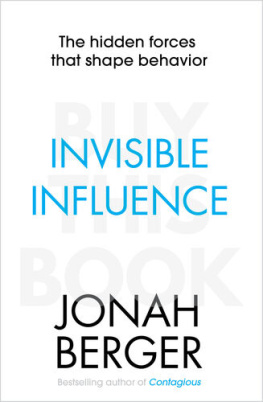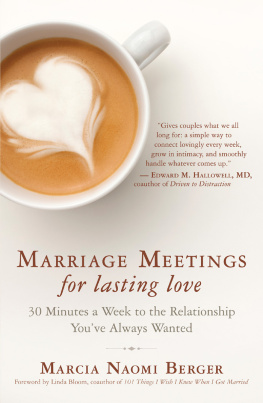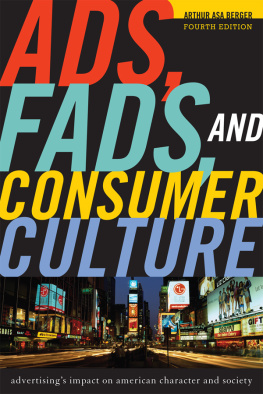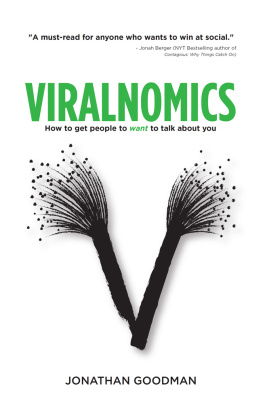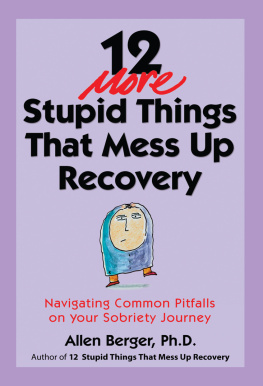Contents
Why $100 is a good price for a cheesesteak... Why do some things become popular?... Which is more important, the message or the messenger?... Can you make anything contagious?... The case of the viral blender... Six key STEPPS. When a telephone booth is a door... Ants can lift fifty times their own weight.... Why frequent flier miles are like a video game... When its good to be hard to get... Why everyone wants a mix of tripe, heart, and stomach meat... The downside of getting paid... We share things that make us look good. Which gets more word of mouth, Disney or Cheerios?... Why a NASA mission boosted candy sales... Could where you vote affect how you vote?... Consider the context... Explaining Rebecca Black... Growing the habitat: Kit Kat and coffee... Top of mind, tip of tongue. Why do some things make the Most E-Mailed list?... How reading science articles is like standing at the edge of the Grand Canyon... Why anger is like humor... How breaking guitars can make you famous... Getting teary eyed about online search... When we care, we share. Is the Apple logo better upside down than right side up?... Why dying people turn down kidney transplants... Using moustaches to make the private public... How to advertise without an advertising budget... Why anti-drug commercials might increase drug use... Built to show, built to grow. How an eighty-six-year-old made a viral video about corn ... Why hikers talk about vacuum cleaners... E-mail forwards are the new barn raising... Will people pay to save money?... Why $100 is a magic number... When lies spread faster than the truth... News you can use. How stories are like Trojan horses... Why good customer service is better than any ad... When a streaker crashed the Olympics... Why some story details are unforgettable... Using a panda to make valuable virality... Information travels under the guise of idle chatter. Why 80 percent of manicurists in California are Vietnamese... Applying the STEPPS.
To my mother, father, and grandmother.
For always believing in me.
Introduction: Why Things Catch On
By the time Howard Wein moved to Philadelphia in March 2004, he already had lots of experience in the hospitality industry. He had earned an MBA in hotel management, helped Starwood Hotels launch its W brand, and managed billions of dollars in revenue as Starwoods corporate director of food and beverage. But he was done with big. He yearned for a smaller, more restaurant-focused environment. So he moved to Philly to help design and launch a new luxury boutique steakhouse called Barclay Prime.
The concept was simple. Barclay Prime was going to deliver the best steakhouse experience imaginable. The restaurant is located in the toniest part of downtown Philadelphia, its dimly lit entry paved with marble. Instead of traditional dining chairs, patrons rest on plush sofas clustered around small marble tables. They feast from an extensive raw bar, including East and West Coast oysters and Russian caviar. And the menu offers delicacies like truffle-whipped potatoes and line-caught halibut FedExed overnight directly from Alaska.
But Wein knew that good food and great atmosphere wouldnt be enough. After all, the thing restaurants are best at is going out of business. More than 25 percent fail within twelve months of opening their doors. Sixty percent are gone within the first three years.
Restaurants fail for any number of reasons. Expenses are higheverything from the food on the plates to the labor that goes into preparing and serving it. And the landscape is crowded with competitors. For every new American bistro that pops up in a major city, there are two more right around the corner.
Like most small businesses, restaurants also have a huge awareness problem. Just getting the word out that a new restaurant has opened its doorsmuch less that its worth eating atis an uphill battle. And unlike the large hotel chains Wein had previously worked for, most restaurants dont have the resources to spend on lots of advertising or marketing. They depend on people talking about them to be successful.
Wein knew he needed to generate buzz. Philadelphia already boasted dozens of expensive steakhouses, and Barclay Prime needed to stand out. Wein needed something to cut through the clutter and give people a sense of the uniqueness of the brand. But what? How could he get people talking?
How about a hundred-dollar cheesesteak?
The standard Philly cheesesteak is available for four or five bucks at hundreds of sandwich shops, burger joints, and pizzerias throughout Philadelphia. Its not a difficult recipe. Chop some steak on a griddle, throw it on a hoagie (hero) roll, and melt some Provolone cheese or Cheez Whiz on top. Its delicious regional fast food, but definitely not haute cuisine.
Wein thought he could get some buzz by raising the humble cheesesteak to new culinary heightsand attaching a newsworthy price tag. So he started with a fresh, house-made brioche roll brushed with homemade mustard. He added thinly sliced Kobe beef, marbleized to perfection. Then he included caramelized onions, shaved heirloom tomatoes, and triple-cream Taleggio cheese. All this was topped off with shaved hand-harvested black truffles and butter-poached Maine lobster tail. And just to make it even more outrageous, he served it with a chilled split of Veuve Clicquot champagne.
The response was incredible.
People didnt just try the sandwich, they rushed to tell others. One person suggested that groups get it as a starter... that way you all get the absurd story-telling rights. Another noted that the sandwich was honestly indescribable. One does not throw all these fine ingredients together and get anything subpar. It was like eating gold. And given the sandwichs price, it was almost as expensive as eating gold, albeit far more delicious.
Wein didnt create just another cheesesteak, he created a conversation piece.
It worked. The story of the hundred-dollar cheesesteak was contagious. Talk to anyone whos been to Barclay Prime. Even if people didnt order the cheesesteak, most will likely mention it. Even people whove never been to the restaurant love to talk about it. It was so newsworthy that USA Today, The Wall Street Journal , and other media outlets published pieces on the sandwich. The Discovery channel filmed a segment for its Best Food Ever show. David Beckham had one when he was in town. David Letterman invited Barclays executive chef to New York to cook him one on the Late Show. All that buzz for what is still, at its heart, just a sandwich.
The buzz helped. Barclay Prime opened nearly a decade ago. Against the odds, the restaurant has not only survived but flourished. It has won various food awards and is listed among the best steakhouses in Philadelphia year after year. But more important, it built a following. Barclay Prime caught on.
WHY DO PRODUCTS, IDEAS, AND BEHAVIORS CATCH ON?
There are lots of examples of things that have caught on. Yellow Livestrong wristbands. Nonfat Greek yogurt. Six Sigma management strategy. Smoking bans. Low-fat diets. Then Atkins, South Beach, and the low-carb craze. The same dynamic happens on a smaller scale at the local level. A certain gym will be the trendy place to go. A new church or synagogue will be in vogue. Everyone will get behind a new school referendum.
These are all examples of social epidemics. Instances where products, ideas, and behaviors diffuse through a population. They start with a small set of individuals or organizations and spread, often from person to person, almost like a virus. Or in the case of the hundred-dollar cheesesteak, an over-the-top, wallet-busting virus.
But while its easy to find examples of social contagion, its much harder to actually get something to catch on. Even with all the money poured into marketing and advertising, few products become popular. Most restaurants bomb, most businesses go under, and most social movements fail to gain traction.
Next page



